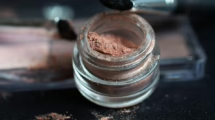Skin Science: The Integumentary System’s Role in Immunity and Repair
Introduction
The integumentary system, primarily comprised of the skin, hair, nails, and associated glands, serves not only as a physical barrier but also plays crucial roles in immunity and tissue repair. This article delves into the multifaceted functions of the skin, particularly focusing on its roles in immune defense and wound healing mechanisms.
The Structure of the Skin
The skin is the largest organ of the human body, covering approximately 1.5 to 2 square meters in adults and accounting for about 15% of body weight. It consists of three primary layers:
-
Epidermis: The uppermost layer, primarily composed of keratinocytes. This layer provides a waterproof barrier and is the first line of defense against pathogens. It also contains melanocytes, which are responsible for pigment production, and Langerhans cells, which play a critical role in immune response.
-
Dermis: Located beneath the epidermis, the dermis is much thicker and contains connective tissues, blood vessels, nerves, and various types of cells. The dermis is responsible for skin’s strength and flexibility and houses essential structures like hair follicles and sweat glands.
- Hypodermis: Also known as subcutaneous tissue, this layer consists mainly of fat and connective tissue. It acts as an insulator, helping to regulate body temperature and serves as a cushion to protect underlying organs.
Immune Functions of the Skin
Physical Barrier
The skin serves as a formidable physical barrier against environmental threats. The outermost layer of the epidermis, the stratum corneum, is composed of dead keratinized cells that provide a tough protective layer. This barrier prevents the entry of pathogens, allergens, and harmful substances, making skin integrity vital for overall health.
Chemical Barrier
The skin also produces various antimicrobial substances. Sebum, secreted by sebaceous glands, has an acidic pH that inhibits pathogen growth. Similarly, defensins and cathelicidins are antimicrobial peptides produced by keratinocytes that further enhance the skin’s protective role by directly killing bacteria and fungi.
Immune Cell Presence
The skin is home to several immune cells that play a crucial role in its defensive mechanisms:
-
Langerhans Cells: Specialized dendritic cells found in the epidermis, Langerhans cells capture and present antigens to T-cells, thereby initiating an adaptive immune response.
-
Mast Cells: Located in the dermis, these cells release histamines and other mediators during allergic reactions and inflammation, contributing to the immune response.
- Macrophages and Neutrophils: These cells patrol the dermis, engulfing and destroying pathogens through phagocytosis while also releasing cytokines to recruit other immune cells to the site of infection.
The Skin Microbiome
The skin is not only a barrier but also a habitat for a diverse array of microorganisms. The skin microbiome plays a significant role in maintaining homeostasis and protecting against pathogenic infections. By competing for resources and producing antimicrobial compounds, resident microbes can inhibit the growth of harmful pathogens, further enhancing skin immunity.
Wound Healing and Repair
Injury to the skin triggers a complex series of biological events aimed at restoring skin integrity. Wound healing occurs in three overlapping phases: hemostasis, inflammation, and proliferation.
Phase 1: Hemostasis
Immediately after an injury, the body’s priority is to stop the bleeding, which involves:
- Vasoconstriction: Blood vessels constrict to minimize blood loss.
- Platelet Activation: Platelets aggregate at the site of injury to form a temporary "platelet plug." They release growth factors and cytokines essential for the healing process.
Phase 2: Inflammation
Following hemostasis, the inflammatory phase begins, which can last for several days. During this phase, several key processes occur:
-
Vasodilation: Blood vessels dilate, increasing blood flow to the area, which causes redness and warmth. This also facilitates the influx of immune cells, such as neutrophils and macrophages.
-
Phagocytosis: Immune cells engulf cellular debris and pathogens, clearing the wound area.
- Cytokine Release: Macrophages and other cells release cytokines, signaling molecules that attract additional immune cells and initiate the proliferation phase.
This inflammatory response is crucial for preventing infection and setting the stage for the subsequent healing processes.
Phase 3: Proliferation
Once the inflammation resolves, the proliferation phase begins, focusing on tissue formation and repair:
-
Fibroblast Activity: Fibroblasts migrate to the wound site, synthesizing collagen and extracellular matrix components that provide the framework for new tissue.
-
Angiogenesis: New blood vessels form to supply oxygen and nutrients to the healing tissue.
-
Re-epithelialization: Keratinocytes migrate across the wound bed to re-establish the epidermal barrier. This process is critical for restoring skin integrity.
- Wound Contraction: Myofibroblasts, specialized fibroblasts, contract to reduce the wound size, helping to close the defect.
Maturation
After the proliferation phase, the wound undergoes maturation, which can take months to years. Collagen fibers in the new tissue continue to reorganize and strengthen, improving the overall integrity and function of the healed area.
Factors Affecting Skin Immunity and Repair
Several intrinsic and extrinsic factors can influence the skin’s immune responses and its capacity for repair:
Age
As individuals age, their skin undergoes structural changes that can impair its barrier function and immune capabilities. Thinning of the epidermis, reduced sebum production, and decreased immune cell density can lead to increased susceptibility to infections and a slower healing process.
Nutrition
Adequate nutrition is vital for maintaining skin health and supporting the healing process. Deficiencies in vitamins (such as A, C, and E), minerals (like zinc), and essential fatty acids can hinder both immune function and the wound healing cascade.
Chronic Conditions
Conditions such as diabetes, vascular disease, and autoimmune disorders can significantly impair skin integrity and delay healing. For example, diabetes can lead to neuropathy and reduced blood flow, adversely affecting wound healing.
Environmental Factors
Exposure to environmental stressors, such as UV radiation, pollutants, and harsh chemicals, can compromise the skin barrier and weaken immune responses. These factors can accelerate skin aging and lead to inflammatory skin diseases, further impairing the integumentary system’s function.
Advancements in Skin Science
Emerging research is yielding novel therapeutic strategies aimed at enhancing skin immune responses and improving wound healing:
Topical Formulations
Recent developments in topical formulations include the use of growth factors, cytokines, and regenerative medicine techniques such as mesenchymal stem cell therapies to promote wound healing and tissue regeneration.
Biomaterials
The advent of bioengineered materials—such as hydrogels, scaffolds, and dressings—has shown promise in providing optimal environments for wound healing. These materials can deliver drugs, support cell migration, and facilitate angiogenesis.
Genetic Engineering
Gene therapy and genetic engineering hold potential for repairing or enhancing skin function. For instance, researchers are investigating ways to boost the expression of specific antimicrobial peptides in skin cells to strengthen the barrier against infections.
Conclusion
The integumentary system plays a pivotal role in maintaining homeostasis through its critical functions in immunity and repair. Understanding the complex interplay between skin structure, immune responses, and healing mechanisms provides valuable insights into skin-related health issues and potential therapeutic strategies. Continued research in this field holds promise for developing innovative treatments to enhance skin health and combat various dermatological conditions.
While this article provides a comprehensive overview, further exploration into specific topics can yield even richer insights. From unraveling the complexities of specific immune pathways to leveraging cutting-edge technologies in repair, skin science remains a thriving and vital field of research with far-reaching implications for health and well-being.


























Add Comment